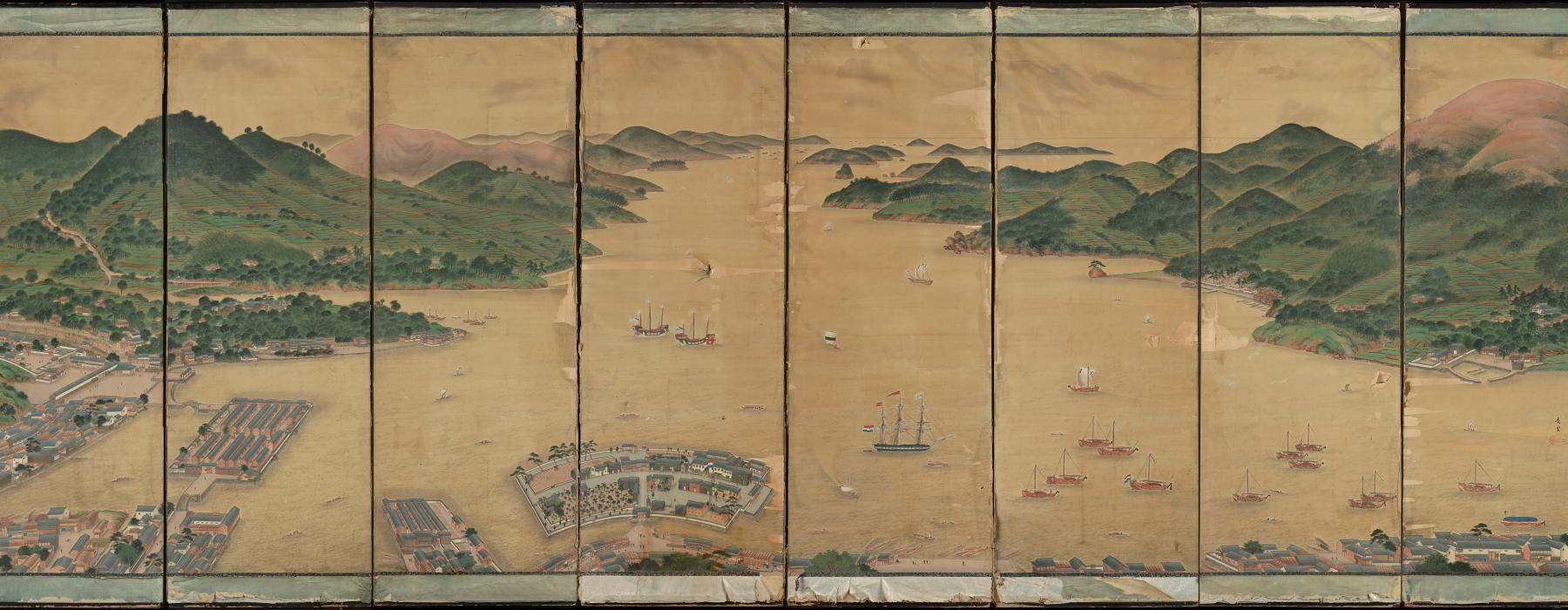
The folding screen is a veritable masterpiece, but currently in poor condition and desperately in need of complete restoration. That promises to be an exciting process, especially because we expect to make interesting discoveries along the way. Over the coming months we’ll regularly be updating this blog with the latest news and images tracking the various stages of the restoration process. Alongside these updates we’ll be talking a bit more about the unique Japanese-Dutch context in which this screen was made. The screen’s focal point is, after all, the artificial island of Deshima; the place designated by the Japanese for doing trade with the Dutch, as the sole Europeans permitted to do so. The context in this and upcoming blogposts will show how this screen functions as a key piece that ties our extensive Japanese collection together.
The folding screen has now returned to the National Museum of Ethnology in Leiden, having been on show in its unrestored state at the Kröller-Müller Museum in Otterlo last year. The screen featured in the exhibition ‘Als Kunst je Lief is’ (‘For the Love of Art’), organized to commemorate the 135th anniversary of arts charity the Rembrandt Society. The exhibition featured a wide range of artworks recently acquired with the support of the Rembrandt Society and others. The Keiga screen stole the show, thanks in part to its sheer size. At roughly four and a half metres wide, it was a real eye-catcher. Observant visitors will also have noticed the screen’s multiple signs of wear and tear...